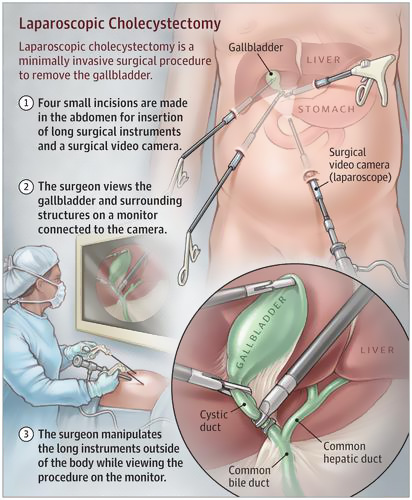Your gallbladder is a small pear-shaped pouch in the upper right part of your abdomen, which stores bile (a digestive fluid that helps to break down fatty food) produced by the liver. Bile is carried from your gallbladder to your intestine through a tube called the bile duct.
Gallstones can develop if the bile gets too concentrated. These can block the bile duct, resulting in abdominal pain, nausea and fever or they may trigger a gallbladder infection (cholecystitis), and lead to the apparition of polyps or even to gallbladder cancer. If gallstones migrate into the main bile duct, they can cause a pancreas inflammation and this can become a life-threatening condition.
If these symptoms persist, removal of the gallbladder is often required. Gallbladder removal or cholecystectomy is a common procedure. This is why, in case of a diagnosis that involves gallstones, your surgeon will discuss a cholecystectomy or a gallbladder removal procedure.
A gallbladder operation is almost always done using keyhole surgery, a procedure also known as laparoscopic cholecystectomy. This means your surgeon can remove your gallbladder without having to make a large cut on your abdomen. Some people may need open surgery however, and your surgeon will explain which method is most suitable for you. The operation is done under general anaesthetic and takes between 60 and 90 minutes. Average hospital stay is 1 – 2 days and the average recovery time is 7 to 10 days but this is an active recovery.

Laparoscopic Cholecystectomy DOI: 10.1001/jama.2018.3438
